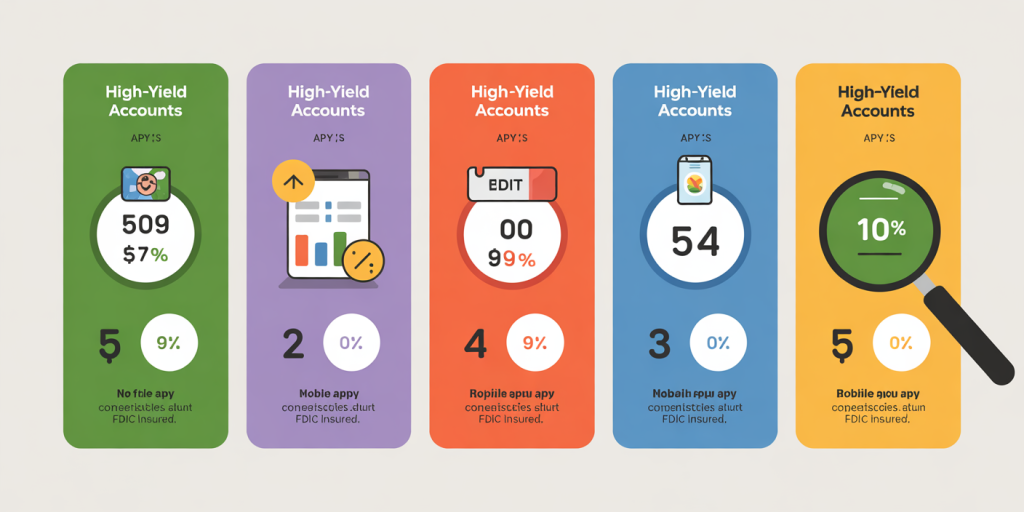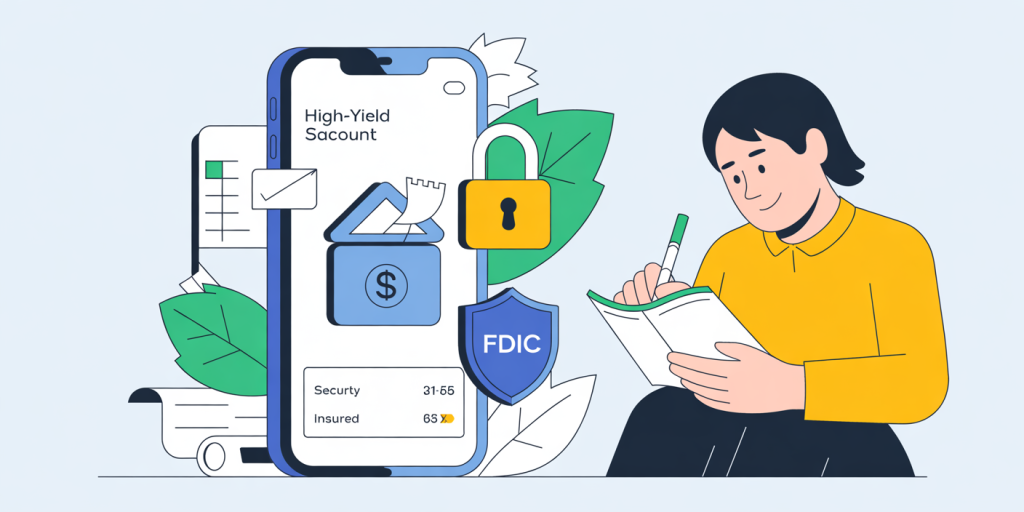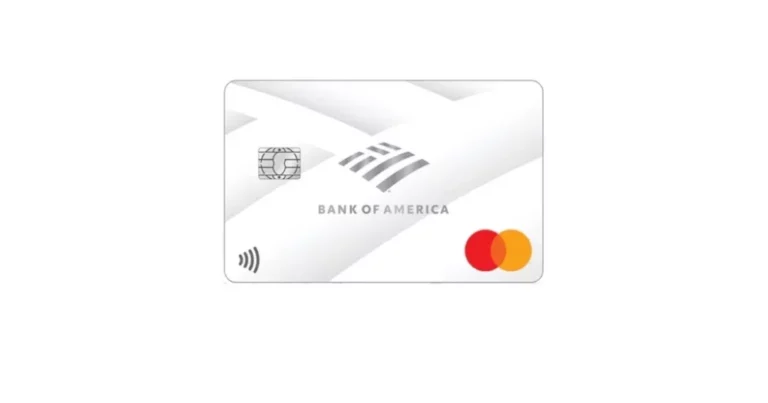High-Yield Savings Accounts: Are They Worth It in 2025?
Anúncios
As we navigate the complexities of personal finance in 2025, one question remains top of mind for savers and investors alike: are high-yield savings accounts still worth it? With interest rates fluctuating, inflation concerns lingering, and countless new digital banks entering the scene, it’s natural to wonder whether parking your money in a high-yield savings account (HYSA) is still a smart financial move.
This comprehensive guide will explore what high-yield savings accounts are, how they work in the current financial landscape, their benefits and drawbacks, and who can benefit most from using one in 2025.
What Is a High-Yield Savings Account?
Anúncios

A high-yield savings account is a type of savings account that offers a significantly higher annual percentage yield (APY) compared to traditional savings accounts. While a typical savings account from a large brick-and-mortar bank may offer 0.01% to 0.10% APY, many high-yield accounts offer APYs between 4.00% and 5.25% in 2025, depending on the provider and market conditions.
Anúncios
These accounts are usually offered by online banks, fintech companies, and some credit unions, which have lower overhead costs than traditional banks and pass those savings on to consumers in the form of higher interest rates.
How Do High-Yield Savings Accounts Work?
Like any savings account, a HYSA allows you to deposit and withdraw funds, but with a much higher interest rate. Interest is typically compounded daily and paid monthly. You can access your funds whenever needed, although some accounts may limit certain types of withdrawals or transfers to comply with federal regulations.
Key Features in 2025:
-
Average APY: 4.50% to 5.25%
-
FDIC or NCUA insurance up to $250,000
-
No monthly maintenance fees with most providers
-
Often no minimum deposit requirements
-
Fully digital access via mobile or web apps
Why the Surge in Popularity?
In recent years, high-yield savings accounts have become more attractive due to:
-
Rising Interest Rates: After a period of historically low rates, central banks increased rates to combat inflation, pushing HYSAs’ returns upward.
-
Economic Uncertainty: More people are seeking safe, liquid places to store emergency funds.
-
Digital Banking Boom: Fintech startups and online banks make it easy to open and manage accounts with no paperwork or in-person visits.
Benefits of High-Yield Savings Accounts
1. Competitive Returns Without Risk
One of the biggest advantages of HYSAs is their ability to generate passive income with virtually no risk. With FDIC or NCUA insurance, your deposits are protected up to $250,000 per institution, per account holder.
For example, if you deposit $10,000 into a HYSA at 5.00% APY, you’ll earn approximately $500 in interest over the course of a year — far more than a traditional savings account would offer.
2. Liquidity and Flexibility
Unlike certificates of deposit (CDs) or investment accounts, high-yield savings accounts provide immediate access to your funds. You’re not locked in, and there are usually no penalties for withdrawals.
3. Great for Emergency Funds
Because of their combination of safety, liquidity, and decent returns, HYSAs are perfect for emergency savings. You can access your funds quickly while still earning interest.
4. Easy to Open and Manage
Most HYSAs can be opened in minutes through a mobile app or website. They offer user-friendly dashboards, mobile check deposit, and seamless fund transfers.
5. Helps Fight Inflation (Somewhat)
While HYSAs don’t completely outpace inflation, earning 5% is better than 0.01%. It helps preserve the purchasing power of your cash savings over time.
Drawbacks of High-Yield Savings Accounts
1. Interest Rates Can Fluctuate
HYSA rates are variable and follow market conditions. If central banks lower interest rates, your APY will likely decrease. This means your earnings are not guaranteed and can change monthly.
2. Not a Long-Term Investment
While better than a traditional savings account, HYSAs won’t build wealth the way stock market investments can. They are best used for short- to medium-term savings goals, not retirement or long-term investing.
3. May Have Transfer Delays
Some online banks take 1–3 business days to transfer money between accounts. This isn’t ideal for extremely time-sensitive needs.
4. Not All Are Equal
Some HYSAs require minimum balances, limit the number of withdrawals, or have tiered interest rates. Always read the terms carefully.
How to Choose the Best High-Yield Savings Account in 2025

When shopping for a HYSA, consider the following criteria:
-
APY: Compare the rates among top providers. Look for consistent APY history, not just promotional rates.
-
Fees: Avoid accounts with monthly fees, low balance fees, or withdrawal penalties.
-
Ease of access: Look for mobile apps, fast transfers, and good customer service.
-
Deposit insurance: Ensure the account is FDIC- or NCUA-insured.
-
Minimum balance: Choose an account that fits your financial situation.
Top HYSA Providers in 2025 (Examples)
Note: Rates are subject to change. Check current offerings before opening an account.
-
Ally Bank – 4.85% APY, no minimums
-
Marcus by Goldman Sachs – 5.00% APY, no fees
-
Capital One 360 – 4.50% APY, mobile-friendly
-
Discover Bank – 4.90% APY, solid reputation
-
SoFi – Up to 5.25% APY with direct deposit
Real-Life Example: Emily’s Emergency Fund
Emily set up a HYSA in early 2024 with $5,000 at 4.75% APY. She added $250 monthly for a year. By the start of 2025, her account balance had grown to $8,200 — including nearly $150 in interest. That same amount in a traditional savings account would have earned less than $10.
Use Cases Beyond Emergency Savings
-
Saving for a House Down Payment: Keep your funds safe and growing while you prepare to buy.
-
Vacation Fund: Earn interest while building up for your next trip.
-
Tax Payments: Freelancers or small business owners can use HYSAs to store money for quarterly taxes.
-
Tuition or Education Funds: Short-term academic savings can benefit from a HYSA’s flexibility and security.
Tips to Maximize HYSA Returns
-
Set up automatic transfers from checking to savings
-
Use a HYSA alongside a budgeting app to track goals
-
Re-evaluate rates every 6 months to ensure competitiveness
-
Combine with sinking funds for specific short-term needs
-
Avoid dipping into the account unless necessary
Who Should Use a HYSA?
-
New savers looking to grow an emergency fund
-
Individuals preparing for short-term goals (1–3 years)
-
Those who want low-risk, flexible savings options
-
People transitioning funds from underperforming accounts
Who Should Avoid a HYSA?
-
Investors seeking long-term high returns
-
Those who need instant cash access with no transfer delays
-
Individuals uncomfortable managing accounts online
HYSAs vs. Alternatives
| Account Type | APY Range (2025) | Risk Level | Liquidity | Best Use |
|---|---|---|---|---|
| High-Yield Savings | 4.5%–5.25% | Very low | High | Emergency savings |
| CDs (12–24 months) | 4.0%–5.5% | Low | Low | Fixed short-term goals |
| Money Market Accounts | 3.5%–5.0% | Low | Medium | General savings |
| Brokerage Account | Varies | Medium–High | Low–Medium | Long-term investments |
Conclusion: Are High-Yield Savings Accounts Worth It in 2025?

Yes — if used strategically. High-yield savings accounts remain a valuable tool in 2025 for preserving capital, earning interest, and achieving short-term financial goals. While they won’t make you rich, they’re far superior to traditional savings accounts and can play a crucial role in any well-rounded financial plan.
Whether you’re building your emergency fund, saving for a short-term goal, or just want a safe place to stash your cash, a HYSA is a smart, flexible, and low-risk option worth considering this year.
The key is to choose the right account, stay consistent with deposits, and view it as one piece of a broader strategy toward financial security.

Post Comment